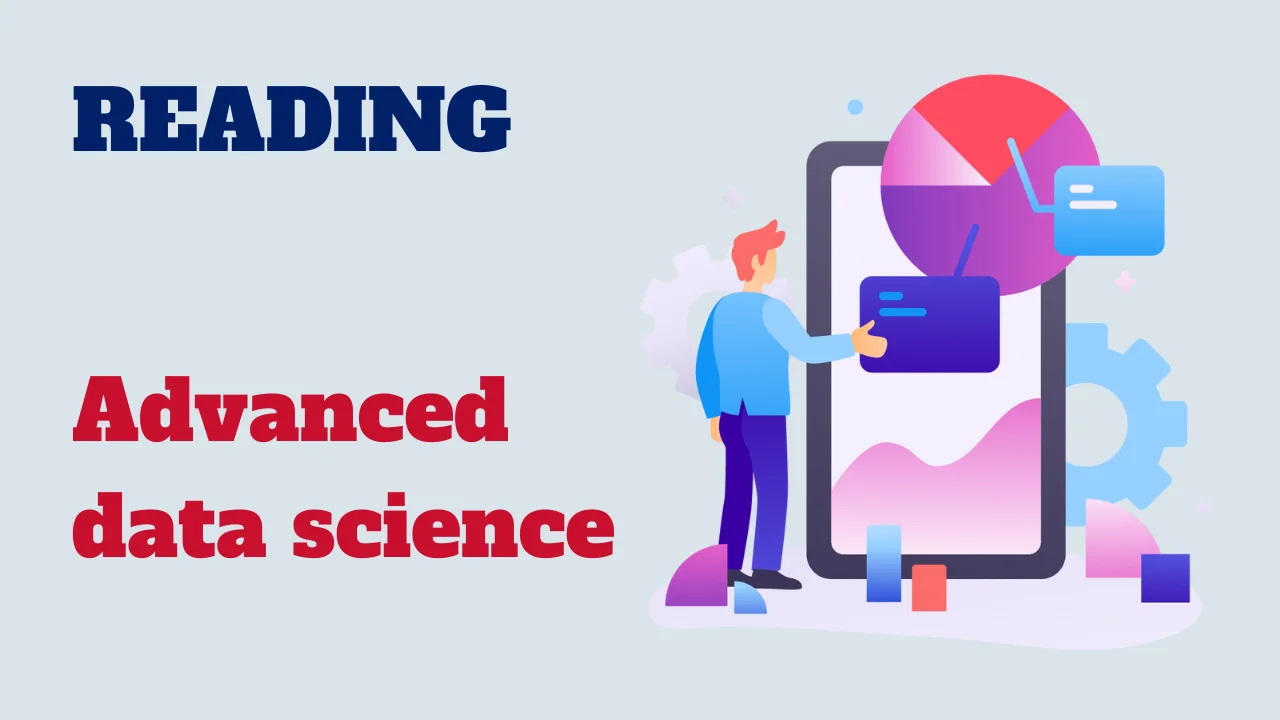This reading text discusses advanced data science, a field that goes beyond basic data analysis techniques to tackle complex problems and extract actionable insights from large and diverse datasets.

Advanced data science encompasses sophisticated algorithms, machine learning techniques, and statistical models to uncover hidden patterns, make predictions, and drive decision-making processes across various industries and domains.
Text: Advanced data science
Advanced data science is a multidisciplinary field that involves sophisticated techniques and methodologies to extract actionable insights from large and complex datasets. This field builds upon foundational concepts in statistics, machine learning, and computer science, incorporating advanced algorithms, deep learning, and big data technologies to solve complex problems in various domains.
One of the key aspects of advanced data science is the use of machine learning algorithms. These algorithms enable systems to learn from data, identify patterns, and make predictions with minimal human intervention. Advanced machine learning techniques such as ensemble methods, reinforcement learning, and neural networks are essential for tackling problems in areas like image and speech recognition, natural language processing, and predictive analytics.
Deep learning, a subset of machine learning, involves neural networks with many layers (deep neural networks) that can model complex relationships in data. Techniques such as convolutional neural networks (CNNs) for image processing and recurrent neural networks (RNNs) for time-series data have revolutionized fields like computer vision, speech recognition, and autonomous systems. Transfer learning and generative adversarial networks (GANs) are also significant advancements that have expanded the capabilities of deep learning models.
Big data technologies are crucial in advanced data science for managing and processing vast amounts of data efficiently. Tools like Hadoop, Spark, and distributed databases enable the handling of petabytes of data, facilitating real-time analytics and large-scale data mining. Advanced data science also involves sophisticated data engineering practices, including data cleaning, transformation, and integration, to ensure high-quality input for analysis.
Moreover, advanced data science incorporates statistical methods and hypothesis testing to derive insights and validate findings. Techniques such as Bayesian inference, survival analysis, and multivariate statistics are used to understand complex data structures and relationships.
Applications of advanced data science span various industries. In healthcare, it helps in predictive diagnostics and personalized medicine. In finance, it aids in fraud detection and algorithmic trading. In marketing, it enhances customer segmentation and recommendation systems. Advanced data science also drives innovations in autonomous vehicles, smart cities, and the Internet of Things (IoT).
Ultimately, advanced data science represents the cutting edge of data analysis, leveraging powerful computational tools and innovative methodologies to transform raw data into strategic assets, driving decision-making and fostering innovation across sectors.
From fraud detection and risk management to personalized medicine and supply chain optimization, advanced data science empowers organizations to leverage data as a strategic asset and gain a competitive edge in today’s data-driven world.
Comprehension questions
Advanced data science represents a sophisticated approach to extracting insights from complex and large datasets, leveraging machine learning, statistical modeling, and big data technologies. By empowering organizations to make data-driven decisions and gain competitive advantages, advanced data science plays a pivotal role in driving innovation and addressing challenges across various industries and domains.



